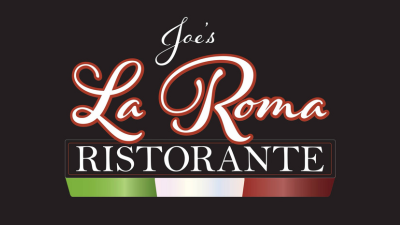Editor’s note: The views and opinions expressed in this review are solely those of Marlon Wallace and do not necessarily reflect the views and opinions of WBOC.
Edward Streeter wrote the novel Father of the Bride (1949). MGM adapted it into a feature film in 1950, which got nominated for three Academy Awards, including Best Picture, Best Writing and Best Actor for Spencer Tracy. It was so successful that a sequel was produced the following year and a CBS series was produced a decade later. I didn’t see any of those entries into what can be described as a franchise. A remake 30 years after the series was produced in 1991 with Steve Martin taking the Spencer Tracy role. The 1991 version was successful enough to get a sequel as well. The sequel was not as successful as the previous, but it was still enough in this low-key franchise to still garner interest from the studios. Bollywood even created an adaptation of it in 2008, which took the same premise but filled it with Tamil-language and Indian culture. This film, directed by Mexican-Turkish filmmaker Gaz Alazraki (Club de Cuervos) and written by Cuban-American Matt Lopez (Promised Land), takes the same premise but fills it with Spanish-language and both Mexican and Cuban culture.
Andy Garcia (Ocean’s Eleven and Godfather Part III) stars as Guillermo Herrera aka “Billy,” an architect with his own firm. He’s also a Cuban immigrant who came to the United States for a better life. He lives in Miami, Florida, with his wife and two children. His two children are both adults, seemingly in their mid 20’s. His eldest daughter is probably in her late 20’s, which makes all the characters older than they were in both the 1991 and 1950 versions. Garcia is taking the Steve Martin and Spencer Tracy role, that of the father of a young woman who returns home to tell him that she’s getting married in a surprise announcement. The film then follows as the family prepares for the upcoming wedding. The age of the titular character isn’t the only difference made from the previous versions.

One of the other differences is that this film isn’t as funny or as comedic as the 1991 version. Since I haven’t seen the 1950 version, this film could be more in line with that 1950 interpretation. Steve Martin is a comedian. He’s known mostly for doing comedy, both in television and in cinema. He’s literally done stand-up comedy. The 1991 version, therefore, feels funnier or more comedic because Martin is in the lead. The 1991 filmmakers probably leaned more into the comedy because they had a comedian as the protagonist. For example, Martin has some physical comedy bits, which involve literal pratfalls and some wardrobe malfunctions. Garcia doesn’t get that kind of physical comedy to play or any physical comedy really. Garcia’s role here is instead more of a dramatic one, which is fine, but the drama isn’t what one would expect.
Gloria Estefan (A Change of Heart and Music of the Heart) co-stars as Ingrid Herrera, a fellow Cuban immigrant who is the wife of Billy. She worked as an interior decorator. She’s now probably retired. She is the mother to two daughters who are now grown and out of the house. She has now become bored with her life or thinks her husband has become boring. She says that he’s stubborn and stuck in his old ways. She wants to venture out of their neighborhood in Miami, known as Little Havana. She wants to travel, go to places like Greece, as well as try other new things, but she thinks that Billy doesn’t want to try new things or go anywhere. He just keeps recounting the past and his struggles to come to the United States and make a better life, and she’s sick of it.

Another difference from the previous versions is this film opening with both Billy and Ingrid in therapy. They’re having serious marital issues and are on the verge of divorce. There were never any marital issues in either the 1991 or the 1950 version. This is totally new and has been totally invented for Alazraki’s film here, but I’m not sure the film is better for it. It’s simply another layer, an interesting one. It’s also a contrast to see his marriage on the verge of collapse, while his daughter is looking to her parents as a shining example. His marriage is about to end, while hers is about to begin. It’s a writerly contrast that could have been compelling, but the film never really examines Billy and Ingrid’s marriage enough to make us fully understand or feel why they’re on the brink of divorce.
Adria Arjona (Morbius and Pacific Rim: Uprising) also co-stars as Sofia Herrera, the eldest daughter to Billy and Ingrid. She recently graduated from law school in New York City. It’s not clear if she lives there or if she was just there for school. She apparently has gotten job offers in both California and Florida. Her father wants her to take the job in Florida in order to be closer to home, but she announces on her return that she’s met and fallen in love with another law student and she’s moving to Mexico with him.

There have been plenty of films and even TV shows where a father meets his future son-in-law or his daughter’s love interest, and the usual joke is the father thinking that the love interest isn’t good enough or worthy of his daughter. However, the way that the previous narratives in this franchise played out was less about the father being antagonist to his daughter’s love interest. It was more about his own insecurities or anxieties over him feeling as if he’s losing his daughter because his little girl is now grown up and moving on. The 1991 film really underscored this point through its depiction of the relationship between the father and daughter. We saw Martin’s character playing basketball with his daughter. The film really laid the groundwork for having us feel the connection and the bond between the father and daughter. There’s less of that here.
Diego Boneta (Luis Miguel: The Series and Scream Queens) plays Adán Castillo, the aforementioned, Mexican love interest to Billy’s daughter. He’s Sofia’s fiancé. At first, Billy is wary of Adán because Adán doesn’t seem to conform to the ideas of what masculinity is. Adán doesn’t like sports or he’s more into non-traditional athletic activities like yoga. He doesn’t have a religious faith. He doesn’t drink alcohol. This raises an eyebrow with Billy, but what bothers Billy more is despite being a fellow graduate from law school, Adán doesn’t want to become a high-powered attorney. He’d rather do nonprofit work. Like with the previous versions of this film, Billy doesn’t approve of Adán because Billy thinks Adán isn’t going to make enough money to support his daughter, especially if they live in an expensive city like New York or even Miami. However, Billy is shocked when he learns that Adán and Sofia aren’t going to an expensive city and are instead moving to Mexico.

What’s again different in this version than in the previous is that it seems as if Billy is less upset about the fact that his daughter is being taken away from him and more upset about the fact that she’s going to Mexico, which he sees as a regression. Even though Billy emigrated from Cuba, going back to any Latin country seems like it’s a step backwards, given as Billy reiterates all that he did to leave Latin America for the United States. He sees life in the United States as better than in Latin America, which is ironic given that Ingrid has been complaining about Billy’s refusal to leave their Latin community in Miami. This contradictory idea of immigrants leaving their culture but yet bringing it with them and trying to re-create it has been explored before, and that idea is present here, but I don’t think this film really reinforces that idea as well as it could have.
Pedro Damián plays Hernan Castillo, the father to Adán. As in the previous versions, it’s revealed that Hernan is very wealthy, certainly wealthier than Billy. This version has Hernan flaunt that wealth, turning who will pay for Sofia and Adán’s wedding into a battle between Billy and Hernan. It’s a different comedic dynamic than in the 1991 version, which was about the father’s anxiety and stress over having to pay for his daughter’s wedding himself, which gave a more down-to-Earth interpretation of the character. Here, this film really has money as no object. It makes this film more opulent, more 1-percent than working class.

Finally, this film drives home a bit of a rivalry between Billy and Hernan that is a rivalry between Cubans and Mexicans. This rivalry is only limited to one scene. It’s unfortunate that the filmmakers didn’t devote more to this, as it’s the case that different Latino groups are often lumped together when they do have their own distinct customs and traditions. This film could’ve benefited from more of those distinctions and showing how the two Latino groups are different from one another.
Rated PG-13 for suggestive material.
Running Time: 1 hr. and 58 mins.
Available on HBO Max.
































